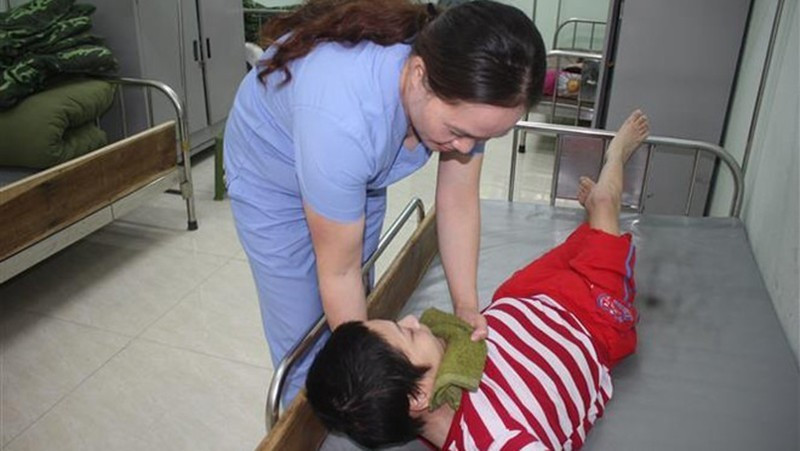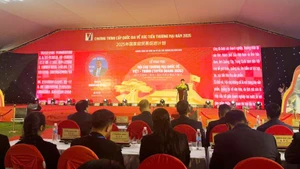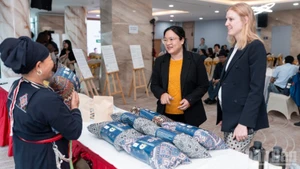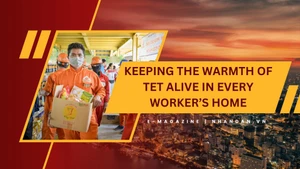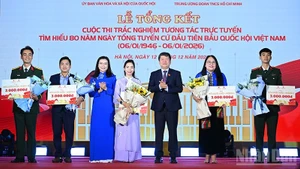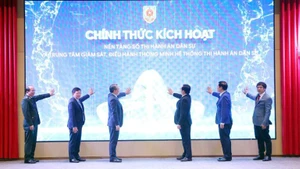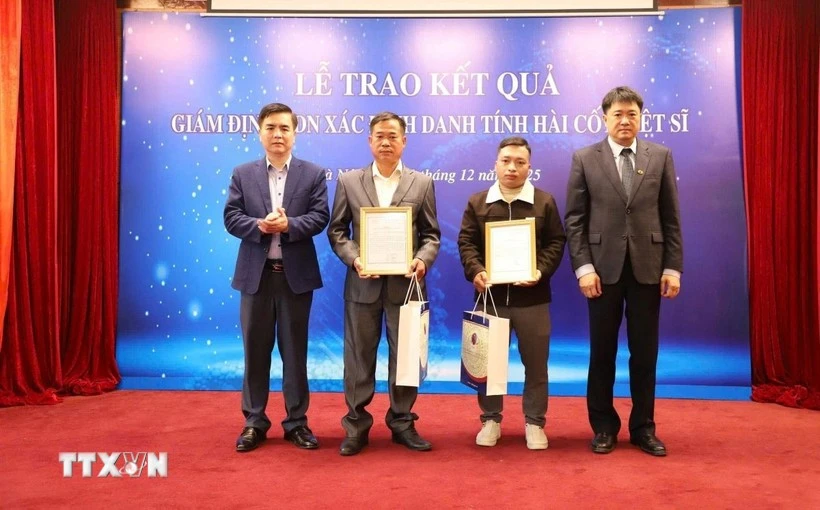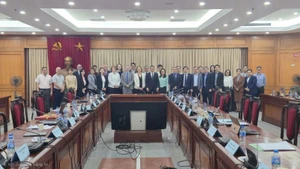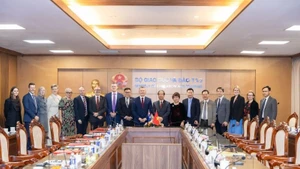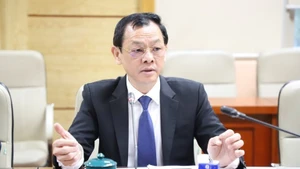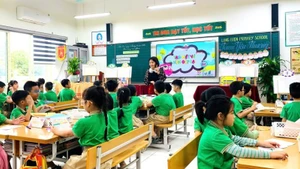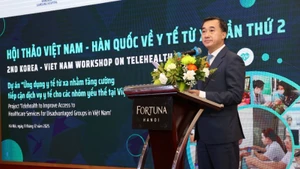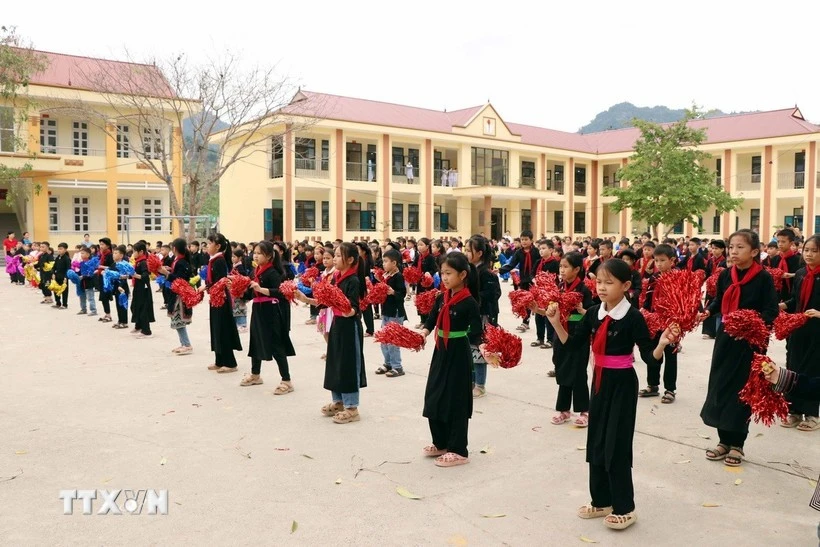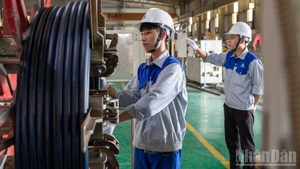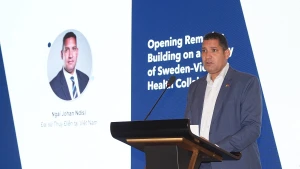In the ten years from 1961-1971, the US sprayed about 80 million litres of toxic chemicals on southern Viet Nam, about 60% of which was Agent Orange containing extremely toxic dioxin, causing an unprecedented disaster in human history: about 4.8 million Vietnamese people were exposed to toxic chemicals, about 3 million of whom were victims of Agent Orange.
Agent Orange/dioxin not only severely affects the health of those who participated in the resistance war but also causes reproductive complications, deformities, congenital malformations, blindness, dumbness, deafness, intellectual disability, mental illness, cancer, etc., for future generations.
Over the years, the Party and State have issued many policies and regimes for people with revolutionary contributions, including the policy for people who participated in the resistance war and were infected with toxic chemicals and their children. The policies are clearly stipulated in Ordinance No. 26/2005/PL-UBTVQH11 on preferential treatment for people with revolutionary contributions; the ordinance amending and supplementing a number of articles of Ordinance No. 04/2012/PL-UBTVQH13 on preferential treatment for people with revolutionary contributions; and Decree No. 131/2021/ND-CP.
However, according to incomplete statistics, as of the end of 2024, the whole country has more than 35,000 Agent Orange/dioxin victims in the third generation (grandchildren) and more than 6,000 victims in the fourth generation (great-grandchildren).
Meanwhile, the beneficiaries of the policy under the provisions of the ordinance on preferential treatment for people with revolutionary contributions only covers the second generation (biological children of those participating in resistance war exposed to toxic chemicals).
The third generation has not enjoyed benefits as Agent Orange/dioxin victims; they can only receive social protection under the Law on Persons with Disabilities. However, the social protection regime is only given to those with severe or particularly severe disabilities. As a result, very few Agent Orange victims receive these benefits, and the allowance levels are very low.
Cao Khanh Hoa, (born in Ung Thien Commune, Ha Noi, in 1951) took part in the resistance war and was exposed to Agent Orange. He has four children, two of whom are victims of Agent Orange. Today, he has six grandchildren, including Cao Minh Quang (born in 2006), who shows clear symptoms of an Agent Orange victim. Despite being 19 years old, he cannot attend school like his peers due to intellectual developmental delays. He also suffers from congenital heart disease and urachal cysts, and must take regular medication. He still needs daily support from his family. Quang currently receives a social protection allowance for persons with disabilities of just over 700,000 VND per month.
According to Tran Van Quang, Chairman of the Ha Noi Association for Victims of Agent Orange/Dioxin, there are currently nearly 300 cases of third-generation Agent Orange victims in the city.
The association has made recommendations to the Department of Labour, War Invalids and Social Affairs (now the Department of Home Affairs), to propose to the Party and state to develop a more suitable policy for third and fourth-generation victims.
The association proposes that in addition to receiving social protection under the Law on Persons with Disabilities, these victims should be received additional remuneration allowances as encouragement.
Nguyen Thuy Hoan, President of the Association of Victims of Agent Orange/Dioxin of Hung Yen Province, said that according to statistics from the former Thai Binh Province, there were more than 700 third-generation victims of Agent Orange. Many cannot take care of themselves. Moreover, in addition to needing support, they also face economic and medical burdens.
The amount of social protection allowance under the Law on Persons with Disabilities is not enough to meet the daily living demands as well as special rehabilitation treatment for Agent Orange victims.
Major General Do Hong Lam, Permanent Vice President of the Viet Nam Association of Victims of Agent Orange/Dioxin, said that not being recognised by the state as Agent Orange victims also causes significant psychological impacts on the spiritual life of families with third-generation victims.
From this reality, for many years, the Party and State have issued directives and decisions on improving the institutions and policies to support Agent Orange victims, including following generations.
These documents have consistently mentioned the need to study and implement policies for third-generation victims. Although the issue has been discussed many times, so far, the inclusion of the third generation of those participating in the resistance wars infected with Agent Orange as beneficiaries of policies for people with meritorious services has not been implemented.
According to Lam, one of the first factors affecting the development of support policies is awareness. Many opinions do not agree on the inclusion of the third generation in the ordinance on preferential treatment for people with revolutionary contributions because the third-generation victims should not be considered as people with meritorious services. Furthermore, many professional agencies have not yet reached a high consensus on the scientific and practical basis in determining the list of diseases, disabilities, deformities, and disabilities caused by toxic chemicals in this third generation.
Since its establishment in 2004, the Viet Nam Association of Victims of Agent Orange/Dioxin has called for and mobilised nearly 5,000 billion VND to support victims, with a focus on supporting the third and fourth generations. However, it is extremely necessary to promptly promulgate policies and regimes to help third-generation victims have solid supports; ensure sustainability in care; and help their families ease the pain of war and rise up in life.
The Central Committee of the Viet Nam Association of Victims of Agent Orange/Dioxin said that in the coming time it will continue to conduct surveys to have the full statistics on the number of victims through generations, then it will propose and recommend state agencies to have appropriate policies for the third generation and enhance the role of associations at all levels in mobilising support, care and assistance for of Agent Orange/Dioxin victims.
The joint participation of the entire political system, social organisations, businesses and each citizen is a solid foundation so that no victim is left behind.
